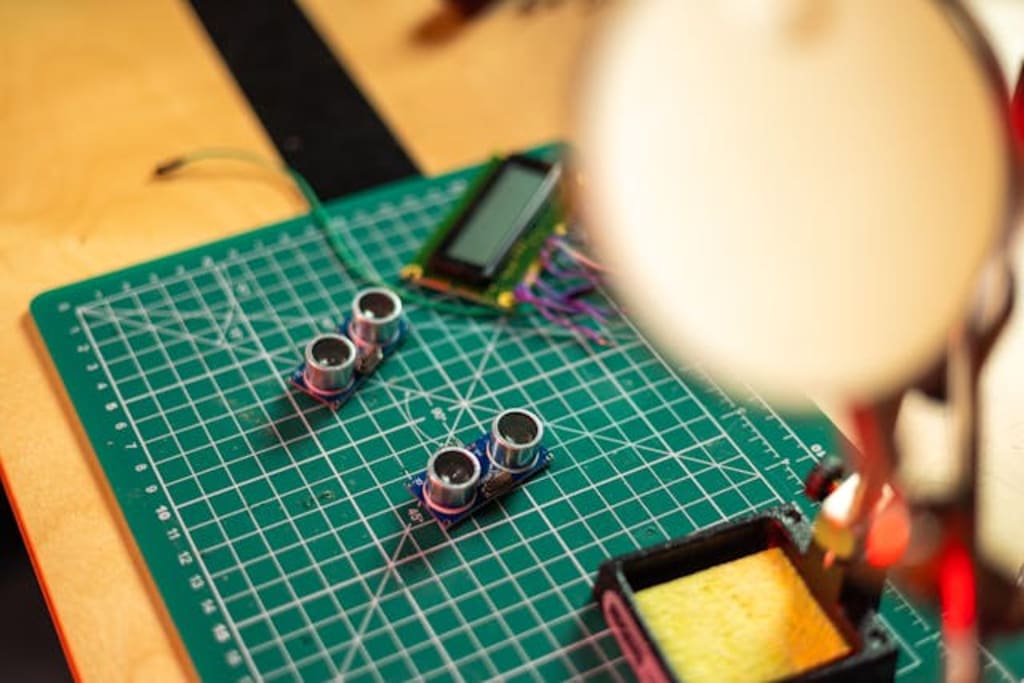How to Reduce Noise Interference in Sensor Readings
Precision inertial sensors are so sensitive that even noise waves can be detected as vibration. For many applications, noise is inevitable, but noise interference in the sensor’s readings is unacceptable. This post explains what causes noise disruption and how it can be prevented.
What Causes Noise Interference for Sensors
Noise comes in two forms, electrical and seismic. The power supply typically transmits electrical noise through the connection to the sensor. Seismic radiates from an outside source such as an airplane engine or a siren. When these acoustic waves are present, the sensor will detect this as vibration.
Sensors are often placed in noisy environments such as factories, trains, and military equipment. Engineers can’t afford to have noise impact their readings, but there are solutions to minimizing this interference.
Eliminating Seismic Noise with a Low Pass Filter
If engineers are certain there will be noise interference in their application, they can request a low pass filter. Upon request, the sensor manufacturer can implement a low pass filter into the sensor’s design. This component will filter out seismic noise that the sensor experiences from external sources. In order to determine if a low pass filter is necessary, the engineers need to inform the manufacturer of the level of noise and its source.
Filtering Out Electrical Noise within the Sensor Connection
Voltage output can be vulnerable to noisy environments, but a shielded connector and cable can reduce this risk. Additionally, instead of using a parallel wire configuration within the cable, a twisted wire can minimize noise.
Long cable lengths typically require 4-20mA output. This is conducive to reducing noise interference since current output is naturally resistant to outside noise interference.
Sensors that Are Vulnerable to Noise Interference
MEMS sensors have the most vulnerability to noise interference. A wider mechanical bandwidth causes a sensor to be more likely to detect acoustic frequencies. Since they have bandwidth to 400 Hz, MEMS accelerometers can be most affected, but all models can come with a low pass filter.
Let’s see various types of sensors within their classification and Applications. A sensor is a device or component that detects changes in its environment and converts those changes into an electrical signal or another form of readable data.
Sensors are used in various applications to monitor, measure, or control processes, equipment, or environmental conditions. They are crucial components in various systems across industries, from consumer electronics to industrial automation and healthcare.
Working of Sensors:
Here’s a breakdown of how Sensors work.
Sensing Element: This is the part of the sensor that directly interacts with the environment to detect changes. It could be a physical, chemical, or biological material that responds to stimuli such as temperature, pressure, light, etc.
Transducer: The sensing element usually produces a change in some physical property, such as resistance, capacitance, or voltage. The transducer converts this change into an electrical signal that can be measured and processed.
Signal Processing Circuitry: Many sensors include circuitry to condition, amplify, filter, or otherwise process the electrical signal from the transducer to improve accuracy, stability, or compatibility with the rest of the system.
Output Interface: This is where the sensor delivers its output. It can be an analog voltage, current, or digital signal, depending on the sensor and its application.
Types of Sensors – Classification:
Sensors can be classified in various ways based on different criteria such as their working principle, application, output signal, and physical properties. Here’s a classification based on some common criteria:
Types of Sensors Based on Power Requirement:
Active Sensors: These sensors require an external power source for operation.
Passive Sensors: These sensors do not require an external power source and generate their output signal in response to the stimulus.
Types of Sensors Based on Output Signal:
Analog Sensors: These sensors provide a continuous output signal typically in the form of voltage, current, or resistance that varies with the measured quantity.
Digital Sensors: These sensors provide discrete output signals such as binary digits (0 or 1) representing the presence or absence of the measured quantity.
Sensor Types by Physical Property:
Contact Sensors: These sensors require physical contact with the object they are measuring (e.g., tactile sensors).
Non-contact Sensors: These sensors can measure without physical contact with the object being measured (e.g., proximity sensors, ultrasonic sensors).
Types of Sensors by Working Principle:
Resistive Sensors: These sensors change their resistance in response to a physical change (e.g., temperature, pressure, or strain). Examples include thermistors, strain gauges, and force-sensitive resistors (FSRs).
Capacitive Sensors: These sensors measure changes in capacitance due to a change in proximity, position, or other physical quantities. Capacitive touch sensors and capacitive humidity sensors are examples.
Inductive Sensors: These sensors detect changes in inductance caused by the presence or absence of a nearby object. Inductive proximity sensors are a common example.
Optical Sensors: These sensors use light to detect changes in the environment. Examples include photodiodes, phototransistors, and light-dependent resistors (LDRs).
Piezoelectric Sensors: These sensors generate an electrical charge in response to mechanical stress or pressure. Accelerometers and piezoelectric pressure sensors are examples.
Thermal Sensors: These sensors measure temperature changes through the change in temperature-dependent electrical properties. Examples include thermocouples, RTDs (resistance temperature detectors), and thermopiles.
Magnetic Sensors: These sensors measure magnetic fields and changes in magnetic fields. Hall effect sensors and magnetoresistive sensors are examples.


0 Comments